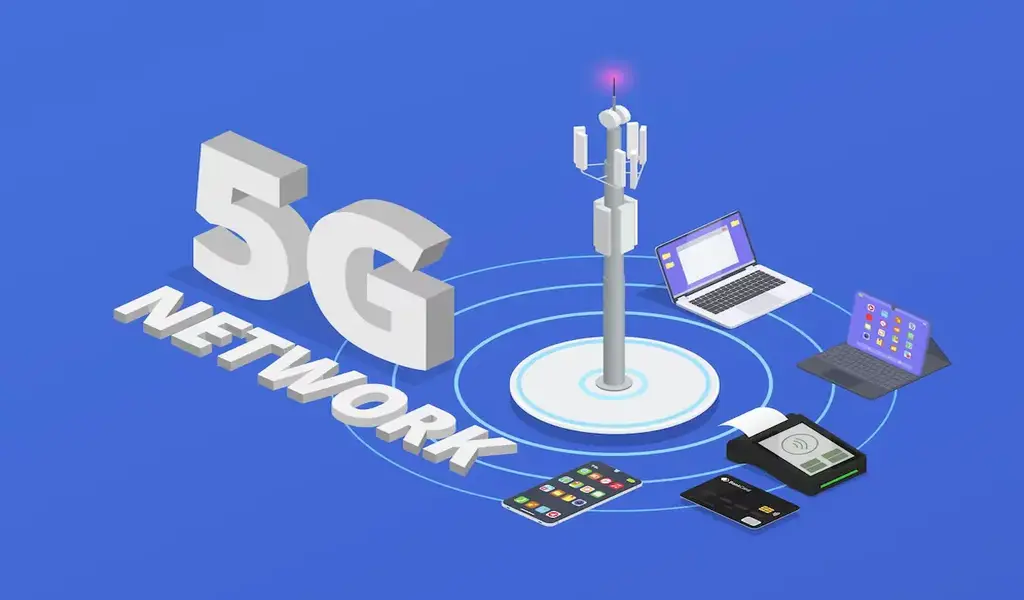Tech
4G vs 5G: Is There a Difference?

The evolution of mobile networks has been remarkable, especially in today’s world of growing internet connectivity. This article highlights the fundamental differences between 4G and 5G networks.
4G vs 5G: Is There a Difference?
The evolution of mobile networks has been remarkable, especially in today’s world of growing internet connectivity. The introduction of 5G has unlocked a new era of undisrupted communication that unravels the many potentials and possibilities of the digital age.
While 4G significantly improves the previous 3G network, 5G represents an exponential upgrade. The download speed for 4G ranges from 5 to 10 Mbps and, in some rare cases, up to 300 Mbps. On the other hand, Upload speed is much slower and ranges from 2 to 50 Mbps.
For 5G networks, the download speed can reach 10 Gbps, although this varies depending on the location. Even more, considering it is relatively new, it is not available in all areas.
The introduction of 4G enabled new businesses to thrive and operate remotely seamlessly. There was a massive surge in the growth of remote work, playing online games, video conference calls, and even self-driving cars. With a 5G network, there is no doubt that more opportunities will open up. This article will highlight the fundamental differences between 4G and 5G networks.
Speed Upgrades
The difference between 4G and 5G is not 1G, as the name might make it look. Instead, there is a significant leap in the connectivity speed between these generations of mobile networks. Theoretically, 5G has a peak speed of up to 10 Gbps which is more than 10 times what is obtainable from 4G. Considering how much the world achieved during the fourth-generation era, there is no doubt that the current 5G network will unlock more opportunities for businesses.
The faster network allows for much more seamless communication, irrespective of location. It is possible to enjoy more realistic video conferences and presentations without fear of disconnection. Likewise, streaming media from platforms like Netflix and YouTube has never remained the same since the launch of the 5G network. Users can now enjoy the highest quality media without any break in transmission.
Likewise, if you are an avid gamer, the casino sites listed on AustraliaOnlineCasinoSites contain some of the finest live dealer games that require the best connectivity. With the speed and reliability of the 5G network, you can stream live events for long gaming sessions without any break in the transmission, which is fantastic.
Low Latency
Arguably one of the most prominent differences you will notice as you transition from a 4G to a 5G network, latency simply refers to the time it takes to send information from one device to another. Although similar to speed, it is different. Speed is the time it takes you to download data, maybe a movie, from the web to your device.
Imagine that you need to reach out to a friend via text, and your device operates with a 4G network with a latency of 30 to 50 milliseconds. So, that’s how long it will take for your friend to receive the message. However, 5G tries as much as possible to eliminate any latency. The aim is to achieve an instantaneous response, usually around 1 millisecond. This game changer is for numerous applications and services that rely on real-time responses like video streaming, online gaming, and self-driving vehicles.
Capacity
Handling many devices simultaneously is crucial in today’s digital world. For an average user, a single router is expected to connect multiple phones, TVs, laptops, and other devices requiring internet connectivity. For most businesses, 5G allows them to scale up technology initiatives and business productivity through its improved capacity. 4G has a limit, and the network becomes congested and slow when the devices are too many.
With 5G networks, there is almost no limit. It is designed to handle as many devices as possible because it uses advanced tools like beamforming and MIMO (multiple-Input Multiple-Output). This is crucial for boosting the development of IoT (Internet of Things) and redefining how wireless networks work. Likewise, most smart homes and cities will seamlessly provide more personalized AI-driven automation for effective home management.
Connectivity and Reliability
Regarding coverage and reliability, 4G is less reliable because it uses lower frequency bands. This provides more comprehensive coverage and better penetration reach. While this is great, it is difficult when many devices are connected simultaneously. Imagine being inside a crowded music concert where almost everyone is trying simultaneously to stream the event live using the same network.
However, the 5G network operates using both higher and lower frequencies. The higher frequency, mmWave, provides a much faster data speed. 5G combines both to provide much more reliable connectivity. It can cover a broad reach without any significant drop in the speed for different users based on their location.
Network Slicing
Network slicing is a communication concept that refers to the possibility of creating multiple virtual networks from one parent node. This is a crucial tool for network providers to deliver tailored services to specific users. 4G and 5G are capable of network slicing. However, it is limited to using virtual LANs and QoS (Quality of Service) mechanisms for 4G networks.
Regardless, 5G offers more flexible and bespoke options because network slicing is integral to its default architectural design. With the same physical structure, operators can create and manage different network slices from the same physical infrastructure. Each of these networks can have its dedicated speed, latency, and unique characteristics for specific purposes, which benefits many businesses and individuals.
Conclusion
The 5G network provides users with a much faster and more reliable internet connection. It is further characterized by low latency, improved capacity, and advanced features like network slicing for creating dedicated networks. Although it is currently not available in all parts of the world, there is no doubt that it will have a transformative impact across different industries and applications.





























